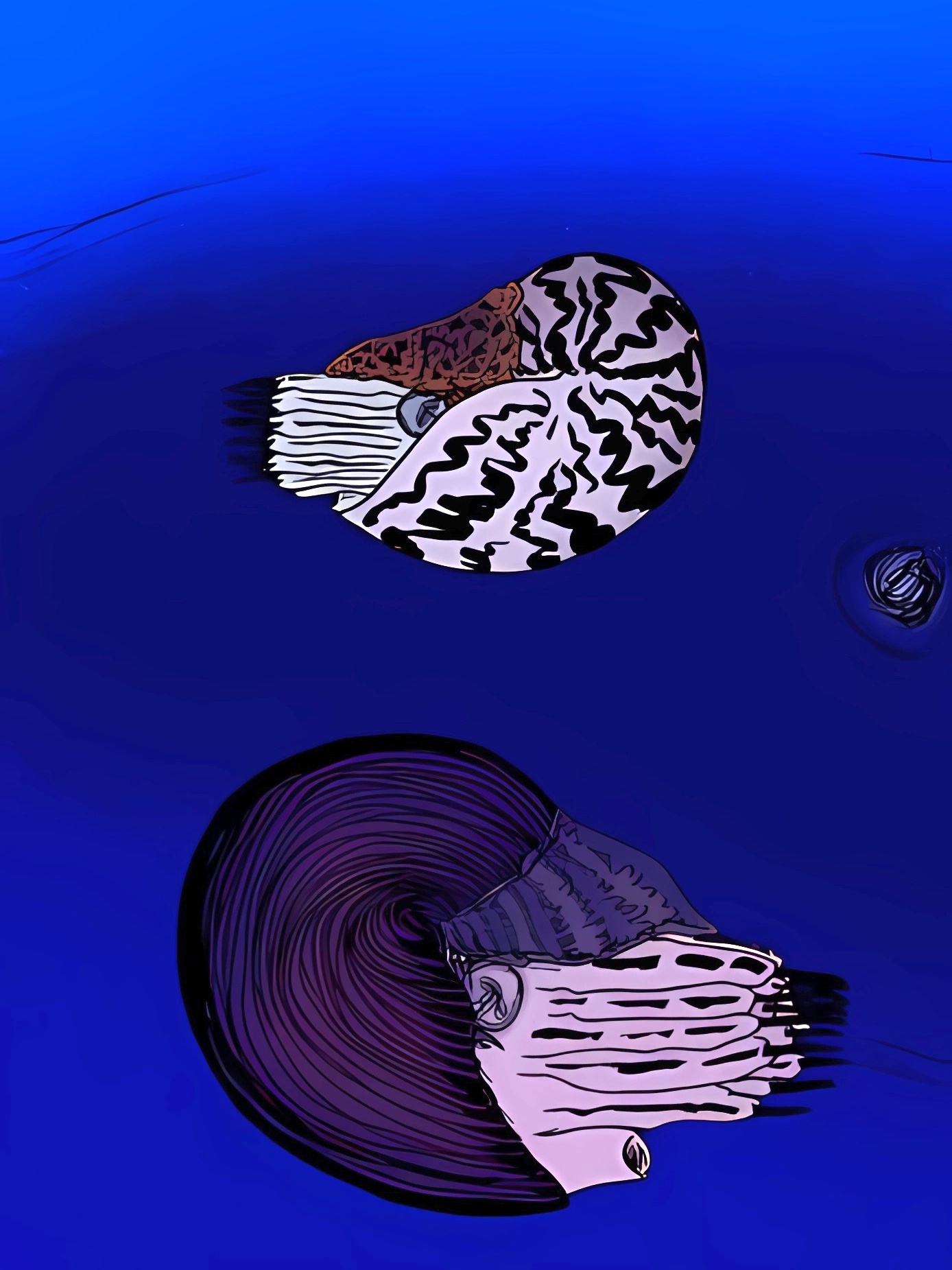Aturia on:
[Wikipedia]
[Google]
[Amazon]
''Aturia'' is an extinct genus of  ''Aturia'' is likely derived from species of the genus '' Aturoidea'' of the family Hercoglossidae. Fossils of ''Aturia'' species are fairly cosmopolitan, being found from Paleogene-aged to Miocene-aged marine strata throughout the world: after the Miocene, the various species disappear from the fossil record. In contrast to
''Aturia'' is likely derived from species of the genus '' Aturoidea'' of the family Hercoglossidae. Fossils of ''Aturia'' species are fairly cosmopolitan, being found from Paleogene-aged to Miocene-aged marine strata throughout the world: after the Miocene, the various species disappear from the fossil record. In contrast to
Paleocene
The Paleocene ( ), or Palaeocene, is a geological epoch (geology), epoch that lasted from about 66 to 56 mya (unit), million years ago (mya). It is the first epoch of the Paleogene Period (geology), Period in the modern Cenozoic Era (geology), ...
to Miocene
The Miocene ( ) is the first epoch (geology), geological epoch of the Neogene Period and extends from about (Ma). The Miocene was named by Scottish geologist Charles Lyell; the name comes from the Greek words (', "less") and (', "new") and mea ...
nautilids within Aturiidae, a monotypic
In biology, a monotypic taxon is a taxonomic group (taxon) that contains only one immediately subordinate taxon. A monotypic species is one that does not include subspecies or smaller, infraspecific taxa. In the case of genera, the term "unisp ...
family, established by Campman in 1857 for ''Aturia'' Bronn, 1838, and is included in the superfamily Nautilaceae
The Nautilaceae form one of five superfamilies that make up the Nautilida according to Bernard Kummel (1964), and the only one that survived past the Triassic. The Nautilaceae comprise six families: Nautilidae, Paracenoceratidae, Pseudonautili ...
in Kümmel 1964.
''Aturia'' is characterized by a smooth, highly involute, discoidal shell with a complex suture and subdorsal siphuncle
The siphuncle is a strand of biological tissue, tissue passing longitudinally through the mollusc shell, shell of a cephalopod mollusc. Only cephalopods with chambered shells have siphuncles, such as the extinct ammonites and belemnites, and the li ...
. The shell of ''Aturia'' is rounded ventrally and flattened laterally; the dorsum is deeply impressed. The suture, one of the most complex in the Nautiloidea
Nautiloids are a group of cephalopods (Mollusca) which originated in the Late Cambrian and are represented today by the living ''Nautilus'' and ''Allonautilus''. Fossil nautiloids are diverse and species rich, with over 2,500 recorded species. Th ...
, has a broad flattened ventral saddle, narrow pointed lateral lobes, broad rounded lateral saddles, broad lobes on the dorso-umbilical slopes, and a broad dorsal saddle divided by a deep, narrow median lobe. The siphuncle is moderate in size and located subdorsally in the adapical dorsal flexture of the septum. Based on the feeding and hunting behaviors of living nautiluses, ''Aturia'' most likely preyed upon small fish and crustaceans
Crustaceans (from Latin meaning: "those with shells" or "crusted ones") are invertebrate animals that constitute one group of Arthropod, arthropods that are traditionally a part of the subphylum Crustacea (), a large, diverse group of mainly aquat ...
.
 ''Aturia'' is likely derived from species of the genus '' Aturoidea'' of the family Hercoglossidae. Fossils of ''Aturia'' species are fairly cosmopolitan, being found from Paleogene-aged to Miocene-aged marine strata throughout the world: after the Miocene, the various species disappear from the fossil record. In contrast to
''Aturia'' is likely derived from species of the genus '' Aturoidea'' of the family Hercoglossidae. Fossils of ''Aturia'' species are fairly cosmopolitan, being found from Paleogene-aged to Miocene-aged marine strata throughout the world: after the Miocene, the various species disappear from the fossil record. In contrast to Nautilidae
A nautilus (; ) is any of the various species within the cephalopod family Nautilidae. This is the sole extant family of the superfamily Nautilaceae and the suborder Nautilina.
It comprises nine living species in two genera, the type genus, ty ...
, ''Aturia'' has no modern descendants.
See also
*List of nautiloids
This list of nautiloids is a comprehensive listing of all Genus, genera that have ever been included in the subclass Nautiloidea, excluding purely vernacular terms. The list includes all commonly accepted genera, but also genera that are now consid ...
References
* Kümmel, Bernhard, 1964; Nautiloidea- Nautilida, Chap in theTreatise on Invertebrate Paleontology
The ''Treatise on Invertebrate Paleontology,'' published from 1953–2007 by the Geological Society of America and the University of Kansas, then 2009–present by the University of Kansas Paleontological Institute, is a definitive multi-authore ...
, Vol K, Curt Teichert and R.C. Moore, eds, University of Kansas Press and the GSA.
* Moore, Lalacker, and Fischer; Invertebrate Fossils, McGraw-Hill Pub. 1952; chapter on cephalopods.
* Garima Sharma; Prehistoric Life, DK Pub. 2009
{{Taxonbar, from=Q3629411
Eocene animals of Oceania
Prehistoric nautiloid genera
Paleocene first appearances
Miocene genus extinctions
Oligocene animals of Oceania
Prehistoric cephalopods of North America